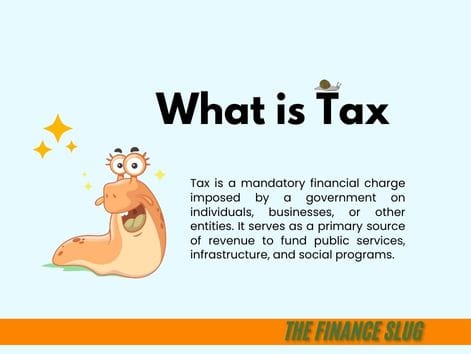
Introduction: What Is Abenomics and Why Does It Matter?
Abenomics is an ambitious economic strategy introduced by former Japanese Prime Minister Shinzo Abe in 2012. This plan aimed to tackle Japan’s economic challenges, such as deflation, slow growth, and an aging population, while making the country more competitive on a global scale. It is a significant case study for understanding how innovative policies can address long-term economic stagnation. Abenomics’ bold approach offers lessons for countries grappling with similar economic challenges, particularly those facing issues like deflation and structural inefficiencies.
The Origins of Abenomics: Addressing Japan’s Lost Decades
To understand Abenomics, it is crucial to grasp the economic context in which it was introduced. After World War II, Japan experienced rapid economic growth, becoming the second-largest economy in the world by the 1980s. However, the bursting of an asset bubble in the early 1990s led to a prolonged period of stagnation known as the “Lost Decades.”
Key problems during this time included:
- Deflation: Persistent price declines discouraged spending and investment.
- Rising Public Debt: Increased government borrowing to support the economy.
- Aging Population: A shrinking workforce and higher social security costs strained resources.
- Weak Consumer Spending: Households and businesses reduced spending, further slowing economic activity.
When Shinzo Abe returned to power in 2012, he unveiled Abenomics to revive the economy and break this cycle of stagnation.
The Three Arrows of Abenomics: A Simple Breakdown
Abenomics is built on three key components, or “Three Arrows,” aimed at addressing both immediate and structural economic issues.
1. Monetary Policy: Aggressive Easing to Fight Deflation
The first arrow focused on using monetary policy to increase the money supply and achieve a 2% inflation target. The Bank of Japan (BoJ) implemented the following measures:
- Quantitative and Qualitative Easing (QQE): The BoJ purchased government bonds and other financial assets to inject money into the economy.
- Negative Interest Rates: Lowering interest rates to encourage borrowing and lending.
- Weakened Yen: The yen’s devaluation made Japanese exports more competitive in global markets.
These policies aimed to boost consumer spending and business investment by increasing liquidity and stabilizing prices.
2. Fiscal Policy: Stimulating Demand through Government Spending
The second arrow involved increased government spending on infrastructure and public works projects to stimulate demand and create jobs. Key initiatives included:
- Investments in transportation and energy infrastructure.
- Support for small and medium-sized enterprises (SMEs).
- Financial aid for disaster recovery and reconstruction projects.
While this approach created short-term economic activity, it also raised concerns about Japan’s already high public debt, which exceeded 200% of GDP.
3. Structural Reforms: Long-term Economic Transformation
The third arrow aimed to address deeper, structural issues in Japan’s economy. These reforms targeted:
- Labor Market Flexibility: Encouraging part-time workers and women to join the workforce (“Womenomics”).
- Corporate Governance: Introducing measures to improve efficiency and transparency in Japanese firms.
- Trade Liberalization: Promoting free trade agreements like the Trans-Pacific Partnership (TPP).
- Innovation and Technology: Boosting research and development in key industries such as robotics and green energy.
These reforms were essential for sustainable growth but faced significant resistance from entrenched interest groups and cultural norms.
Goals of Abenomics: Revitalizing Japan’s Economy
Shinzo Abe’s Abenomics had several ambitious goals:
- End Deflation: Break the deflationary spiral and encourage spending.
- Boost Economic Growth: Increase GDP growth through higher investments and productivity.
- Create Jobs: Expand employment opportunities, particularly for women and older workers.
- Improve Competitiveness: Reform industries and attract foreign investment to revitalize Japan’s economy.
- Manage Public Debt: Balance fiscal stimulus with long-term debt sustainability.
These objectives aimed to restore Japan’s status as an economic powerhouse.
Outcomes of Abenomics: Successes and Limitations
Successes of Abenomics
- Stock Market Growth: The Nikkei 225 surged, reflecting increased investor confidence.
- Improved Unemployment Rates: Job availability reached record highs, and more women joined the workforce.
- Weakened Yen: Boosted exports in industries like automobiles and electronics.
- Inflationary Progress: Inflation rates turned positive, though the 2% target was rarely achieved consistently.
Criticisms and Challenges
Despite its successes, Abenomics faced several criticisms:
- Slow Structural Reforms: Key reforms, such as deregulating agriculture and labor markets, faced political resistance.
- Public Debt Concerns: Fiscal stimulus increased Japan’s already massive debt burden.
- Stagnant Wages: Wage growth did not keep pace with job creation, limiting consumer spending.
- Inflation Target Missed: The BoJ struggled to maintain consistent inflation at 2%.
These challenges highlighted the difficulty of balancing short-term gains with long-term sustainability.
Lessons from Abenomics for the Global Economy
Abenomics offers valuable lessons for other nations facing similar economic challenges:
- Comprehensive Strategies Work Best: Combining monetary, fiscal, and structural policies is essential for meaningful change.
- Structural Reforms Take Time: Addressing deep-rooted issues requires patience and strong political will.
- Aging Populations Need Innovative Solutions: Countries with declining workforces must adapt policies to sustain economic growth.
- Globalization Matters: Encouraging trade and foreign investment can enhance competitiveness.
By studying Abenomics, policymakers worldwide can better understand the complexities of economic reform.
Conclusion: The Legacy of Abenomics
Abenomics was a bold and innovative approach to addressing Japan’s economic challenges. While it achieved notable successes, such as boosting the stock market and reducing unemployment, it fell short in areas like structural reforms and inflation targeting. Despite its mixed results, Abenomics remains a landmark economic experiment that provides key insights into the interplay between monetary, fiscal, and structural policies.
As countries around the world face challenges like aging populations, globalization, and economic stagnation, the lessons of Abenomics offer a roadmap for crafting effective and balanced economic strategies.
Article Sources
Also Read
Stock Market Crash Today: A Bloodbath on Monday – What You Need to Know
Published on financeslug.xyz The global financial markets are reeling from a massive sell-off, and Indian…
Wall Street Bonuses Reach Record $47.5 Billion in 2024, Up 34% from Previous Year
How to Convert Delimited CSV Data into Columns in Excel
CSV (Comma-Separated Values) files are widely used for data exchange, but when opened in Excel,…
Harvard University Announces Free Tuition for Families Earning $200K or Less
Harvard’s New Tuition-Free Policy: What You Need to Know Harvard University has unveiled a groundbreaking…
Eli Lilly’s 1.8B Dollar Investment in Weight Loss Drugs
Ireland’s Weight-Loss Drug Boom: A Game-Changer for Economy and Healthcare Ireland is witnessing a surge…
Forever 21 Files for Bankruptcy Again: The End of an Era in Fast Fashion?
Forever 21, once a staple in American malls and a leader in the fast-fashion industry,…







